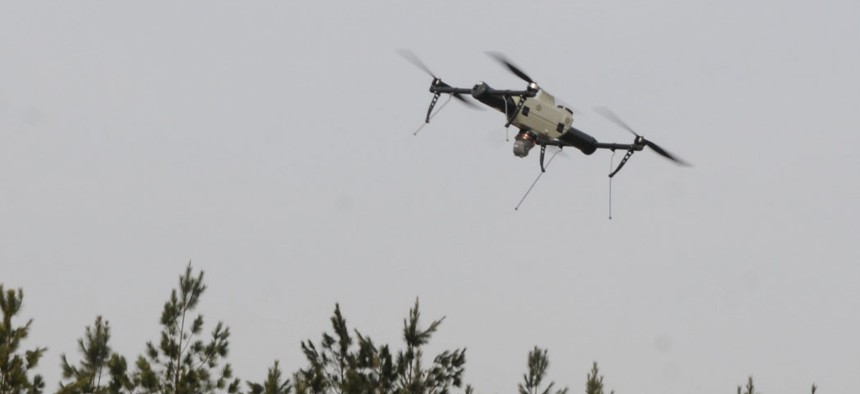Army wants to give soldiers their own micro-drones
The service is asking industry for information on developing UAS weighing 150 grams for ISR in the field.
The Army wants to be able to give deployed soldiers small, personal drones that can be used for ISR (intelligence, surveillance and reconnaissance) and is looking to industry for the latest available technologies.
“Ensuring that soldiers have the most advanced equipment, from protective equipment such as helmets and body armor, to weapons, power solutions and sensors and lasers, means keeping ahead of scientific and engineering innovation,” the Army said in a solicitation for information. “One such effort is bringing small-Unmanned Aircraft Systems (UAS) technology, also known to the Army as Soldier Borne Sensors (SBS), solutions to the individual soldier on the battlefield.,” the notice states.
Such a vehicle will weigh 150 grams (5.3 ounces) and fly for 15 minutes, providing real-time video and telemetry data in day and night conditions. The micro-drone, moreover, should have an operation radius of 500 meters within line of sight, a day range of 100 meters, a night range of 50 meters and operate in wind speeds up to 10 knots. It should be a completely stand-alone system, with all the equipment necessary to be handled by a single operator.
Operators should be able to launch and recover the device without exposing their position—a feature aimed at maintaining a tactical ISR edge at the individual warfighter level on the battlefield.
The military has been looking into small, squad-level or individual drones. Researchers at the Army’s Natick Soldier Research, Development and Engineering Center have worked with an even tinier unmanned helicopter—or about 16 grams—but needed to improve their data links, cameras and navigation.
The Defense Advanced Research Projects Agency also has examined a similar concept for squad-level ISR, although with a little more pizazz. The Fast Lightweight Autonomy (FLA) program seeks small autonomous devices that can operate in tight spaces such as buildings and even stair wells, mimicking the rapid and sporadic flight of an insect or bird. During recent demonstrations, a test aircraft achieved flight speeds of 45 mph.
Responses to the Army’s latest request, which is seeking information only, rather than proposals, are due March 18. The product manager for the program, Small Maneuver Sensors, plans to hold an industry day April 12.





